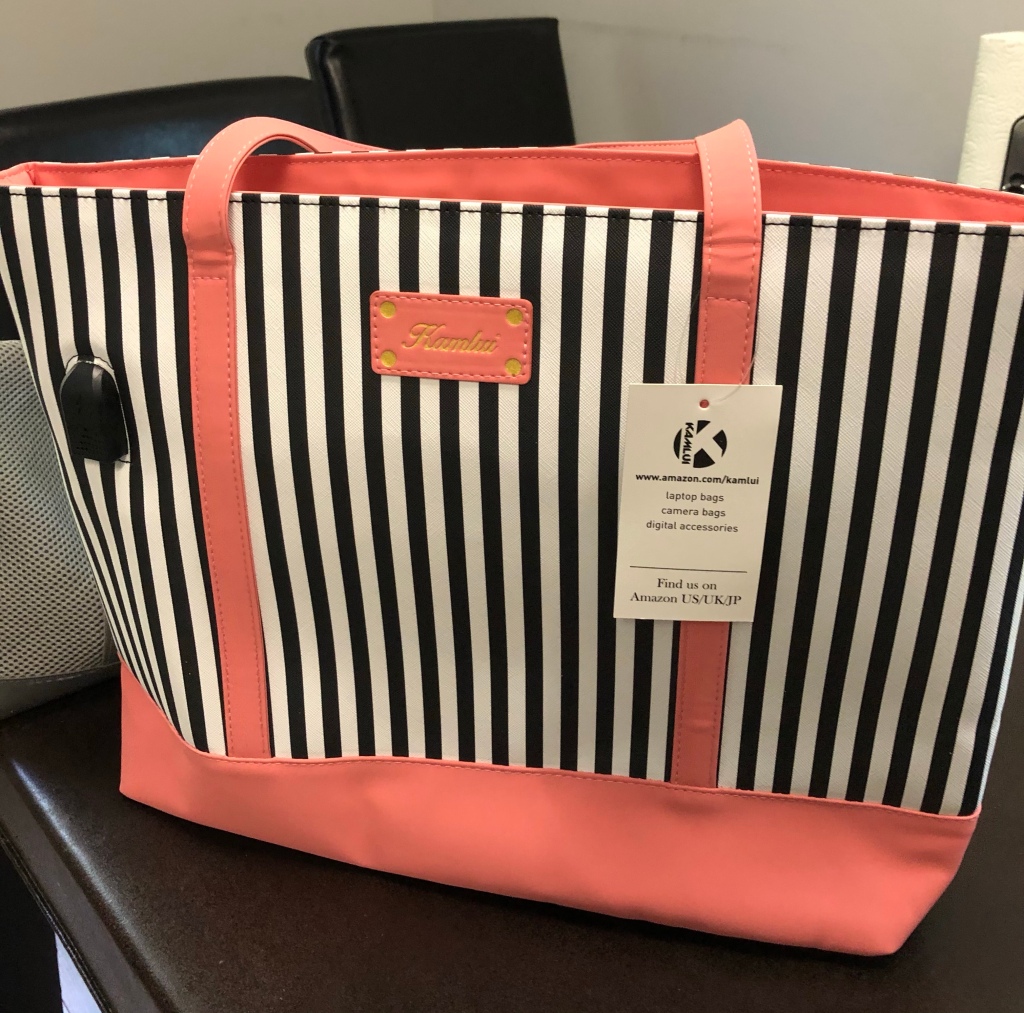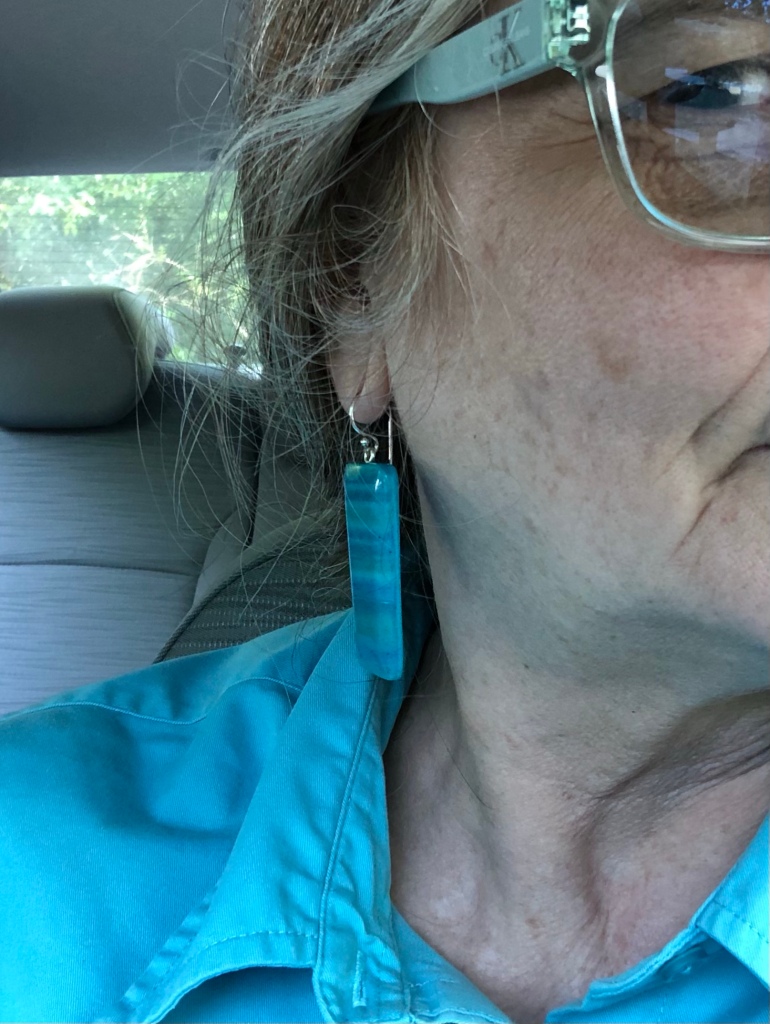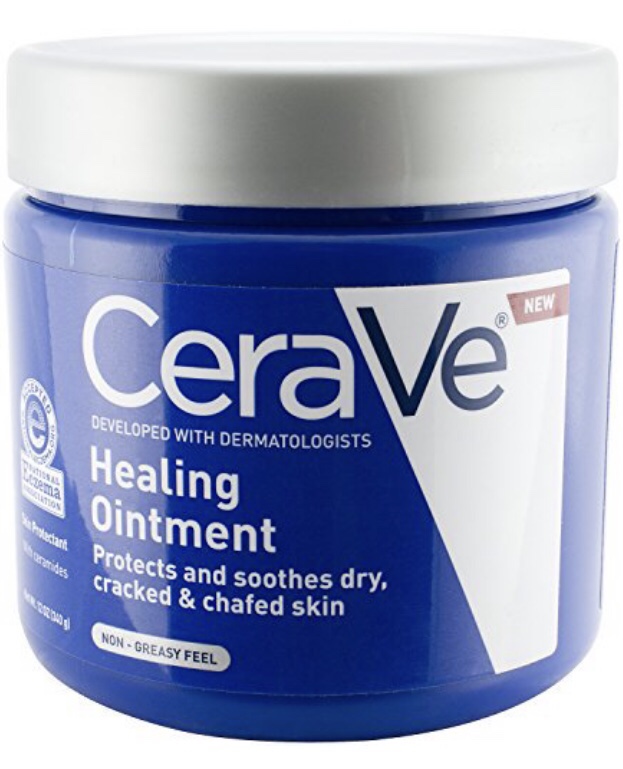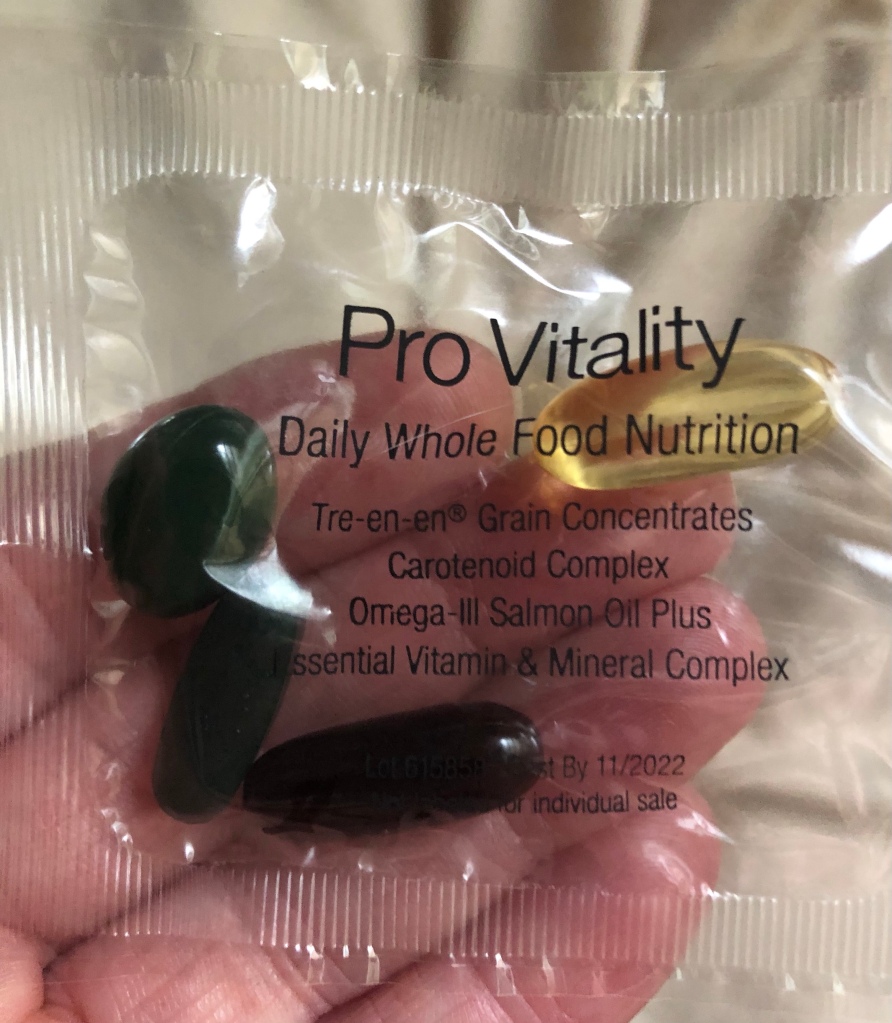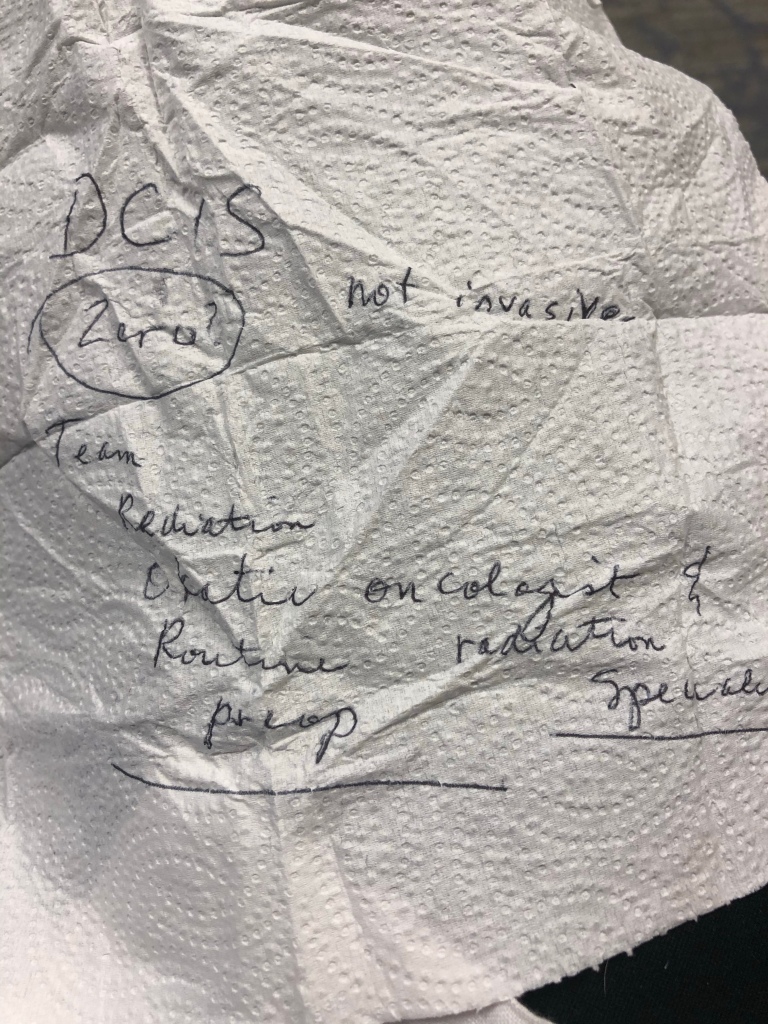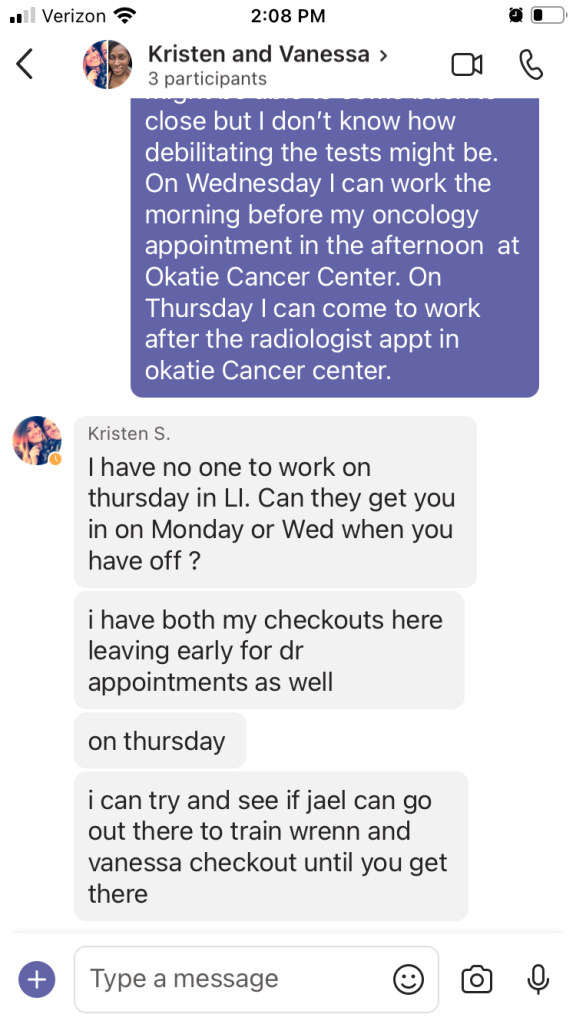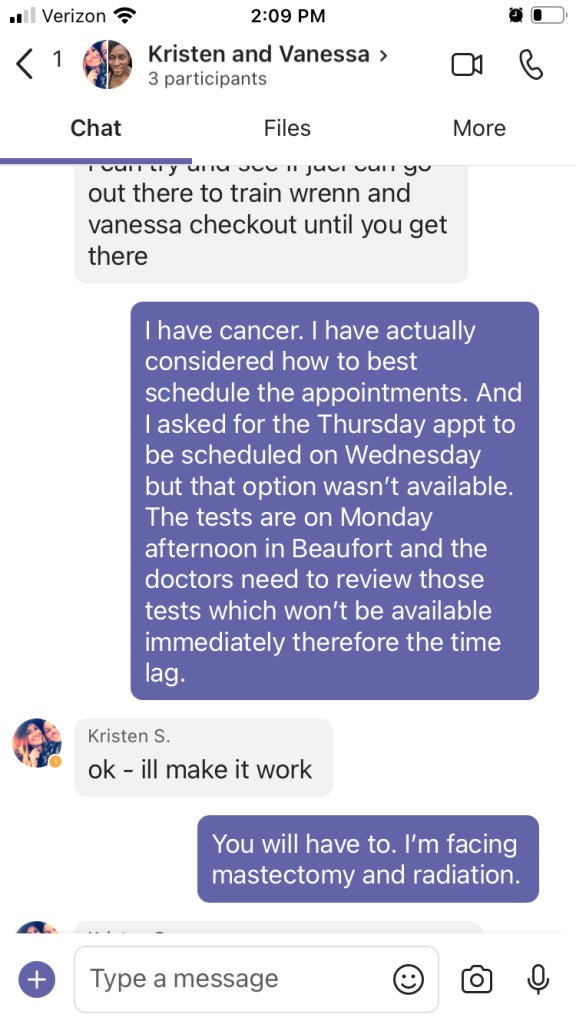Now it’s time for an MRI, with and without contrast. I’ve been told by Elaine at the surgeon’s office that I also need an EKG and a chest X-ray. She said I could stop at the new center or the Beaufort location at any time for the EKG and the chest X-ray, but it makes sense to me to have it done at the same location on the same day as the MRI.
I arrive at the hospital early and sit in the parking lot for a bit. All this medical stuff is new to me.
I locate the correct door to enter. Here in the time of COVID, not all entrances are available. I make my way to the screening station where the attendant takes my temperature and asks the standard screening questions: have you been exposed to COVID-19 in the last 14 days, have you traveled in the last 14 days, and have you tested positive in the last 14 days. She is satisfied with my answers and sends me on to the check-in lobby which is down the hall past the gift shop on the right. Here’s where I start not trusting myself.
The gift shop is in my view from the screening station. As I make my way, the hallway turns to the right past the gift shop. After that on the right there are two large doors that says MRI authorized personnel only. I’m there for an MRI, aren’t I? What does this mean? How did I miss the check-in lobby? I stood outside those doors and breathed for a minute.
Further down the hall, I saw a sign that led me to believe that was my check-in station so I walked a bit further and found that this was an intersection of hallways and the right corner nearest me was where I needed to be. There was no one at the check-in station, but I signed in and took a clipboard to fill out the paperwork. It was the same paperwork that I had filled out when I had the mammogram, when I saw the surgeon, and when I had the stereotactic needle biopsy.
A lady called my name and said for me to go to station 2. It’s a kiosk of sorts where she sat on the opposite side, and I gave her my ID and my insurance card and paperwork. I told her that I also needed an EKG and a chest X-ray, and she asked me if I had orders for that. I didn’t, and told her so and told her that I had been told I could get those at any time and if I needed to go to the other center, I could do that. She said that wouldn’t be necessary, they could do everything today.
I went back to the waiting room, and did a bit of knitting. An attendant entered the room and called my name, and I recognized him from the doctor’s office where I worked. He led me back to the double doors for MRI authorized personnel only and led me to a dressing area. I filled out more paperwork, part of which wanted to know what meds I was taking and asking if I had had hormone replacement therapy or had been on tamoxifen. We discussed what would be happening and he asked if I had any metal implants or dentures. I indicated that I had earrings that I was unable to remove. I had these silver hoops that I had been wearing for years because I couldn’t get them out. I had ordered them on Etsy, and they were hand-made by a woman in Canada and they featured a special device to keep them from coming out which worked so well they were part of my persona now. He couldn’t get the device out and wasn’t sure how they were supposed to work, but he thought his associate could figure it out. I told him if we had to cut them to get them out, we could. He gave me a set of medical clothing to wear because my pants had a metal zipper and couldn’t be worn in an MRI machine. I also received a key to a locker where I could store my things. I got changed in the dressing room and noticed that someone else had lost the back to pierced earring. It sat on the floor and winked at me.
I waited outside the dressing room next to the locker with all my little worldly goods, wearing my new medical outfit. The top was a design I hadn’t seen before. Your left arm goes in an armhole, the garment goes around your back like a jacket, then your right arm goes in another armhole, then a whole front with yet another left armhole goes across your front. The intention is that you are supposed to lie down on your stomach in the MRI machine on a special tray made for your chest to be exposed, but the garment gives you privacy across your back.
His associate came along and I recognized him as another patient in the office where I work. He figured out the device and got both of my earrings out. Then he started putting in an IV in my right arm, which I wasn’t expecting but then I don’t know what an MRI with and without contrast involves. He inserted the IV needle high up on my forearm, almost to the crook of my arm, and asked me if I was on blood thinners, which I am not. I was disconcerted by the placement of the needle, and sat with my arm extended stiffly because I was afraid that the needle in my vein wouldn’t bend and would poke through my vein if I bent my arm at the elbow. The technician apparently saw me sitting there awkwardly and told me that it was okay because it was a tiny little plastic needle.
The IV was accomplished, and I was led into the MRI room. I handed over my glasses, and the first technician said I could remove my mask. I said that if they had to wear one, I would wear one. I wear one all day long and I’m completely comfortable with it. He gave me a set of earplugs, then held up a sheet to give me a bit of privacy because I was going to have to arrange myself on my stomach and get the girls in position. Once I got in place on my stomach, they told me to extend my arms over my head, which I accomplished in a belly-flop position, and they twisted my hair into a loose ponytail and piled it to the left side of my head, being careful and attentive. Then they put a foam wedge under my feet to elevate them and take some of the pressure off and hooked up the IV and gave me a call button to press if I needed assistance.
I have never been in a submarine or on the Starship Enterprise, but I have watched television, and the ambient background noise on TV shows is reminiscent of being in an MRI. The technicians communicated by speaker and I honestly couldn’t understand anything they said. It was like listening to Charlie Brown’s teacher. Wah wah, wah wah, wah wah. I would respond by nodding or saying something like, yes or okay.
The MRI machine is loud. It pops, it clicks, it hums. If you have ever heard the sound that a front-loading washing machine makes when the latch locks into position at the beginning of a cycle, that is one of the sounds you hear. It seemed like at one point the machine made a shimmy or two, like an extended vibration, or was that just the humming, intensified?
The technicians had told me that I would be tested for about 20-25 minutes. I think that this was not right. It seemed like I was counting the seconds to get a sense of minutes, and after a while I stopped. It was like collecting bucket after bucket of invisible seconds from a deep well but you don’t know how deep or big the well is.
I think that I was in the MRI machine for closer to an hour. At one point I regretted keeping my mask on because my face was getting tickly. When I wear a mask at work, I can adjust it periodically, scratch my nose, or remove it to sneeze or cough. Perhaps halfway through, one of the technicians said something over the speaker, maybe to say that they were starting the contrast, and all I could do was give a thumbs up and say okay. I don’t know if they could hear or see me.
When I was growing up, I used to read Reader’s Digests. That would have been back in the 1960s, and the joke pages were always my favorites. There was another feature that had some dramatic, inspiring true-life story of people who overcame impossible odds and lived to tell the tale. Oftentimes, these were POW stories set in WWII. These were the kind of stories that made a kid want to learn Morse code, or memorize entire volumes to repeat back at will, or to learn another language. Because those skills would help you survive a period of trauma.
Today was another Reader’s Digest moment. At one point I had to gather my attention and laser-focus it on concentrating on breathing my way through this process. Would the enemy break me? It would not.
Finally the MRI ended. I was able to get off the machine, and reclaim my glasses and my ponytail holder, and follow the technician back into the dressing area. We passed by the other technician speaking to an elderly woman in a wheelchair, explaining to her that they were going to takes images of her brain.
My technician led me on to the X-ray area. There were several people gathered in an office, and one nice lady came out to say that they had been looking for me and couldn’t find me. I told that I was probably somewhere inside an MRI machine. I must have been looking shell-shocked because she was gentle and kind and looked me in the face. She led me to another area with another dressing room so that I could remove my shirt and bra and put on another gown. After that was done, she led me into the actual X-ray room where she took a view from behind and the front and the side. For the side one, I had to hold onto a bar over my head and in front of me so that my arms were out of the way. The technician seemed to think that the views were acceptable.
Somehow I got dressed and somehow another technician presented himself to lead me to the EKG area. I sat in a chair in the exam room and we determined that he was going to put the sensors in an area around my bra and I would need to unbutton my shirt, but not all the way. At that point I am completely not bothered that I am in a room, partially concealed by a curtain, with an open door and a male attendant who is applying sensors to my upper body with my shirt mostly unbuttoned.
An EKG is fast. I buttoned up, and the technician walked me out. Because some of the entrances are closed due to COVID, he walked me to a closed entrance which is still an active exit.
I made my way to the car and sat for a bit. It was almost 4:30 and I have been in the hospital for about 3 hours.
I had joined a Facebook group for women with DCIS. I don’t know enough about what I don’t know, and these women’s stories are a wide range of hope, fear, and resilience. Many of the women are having to make decisions regarding testing, genetic testing, lumpectomy, single mastectomy, double mastectomy, reconstruction, radiation, and hormone-suppressing medications (DCIS is generally but not always hormone driven). A friend from high school had DCIS with reconstruction. A first cousin had DCIS last year. A distant cousin had invasive cancer and opted for double mastectomy without reconstruction. Some people say not to overthink it. Some people say to get all the information you can in order to make educated decision.
It’s a lot to think about. Next, I’ll see the oncologist, and then the oncology radiologist.
